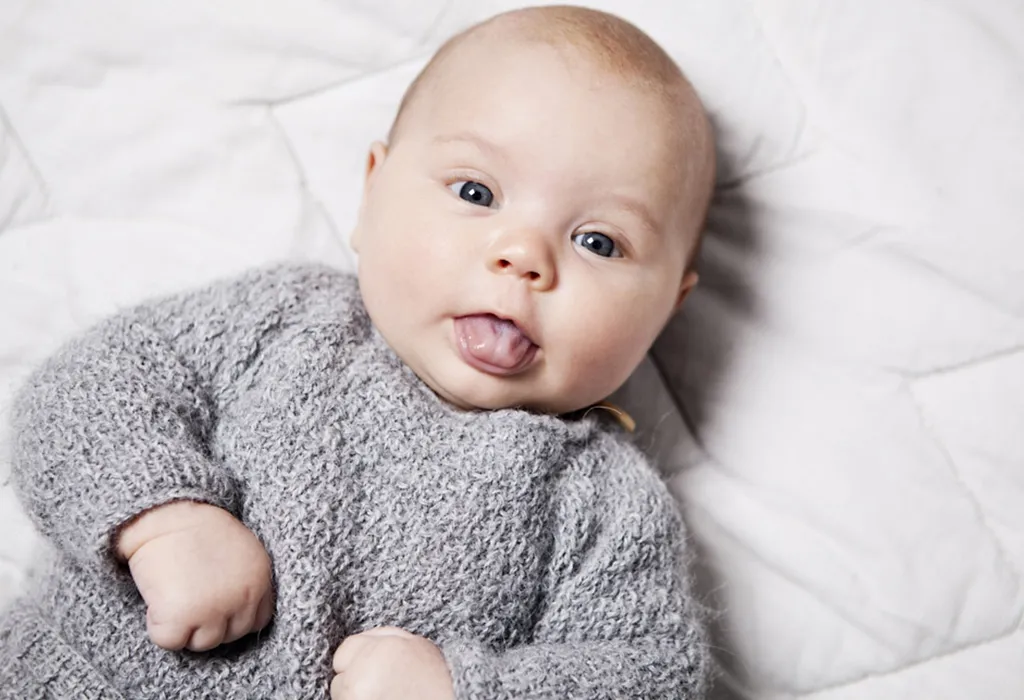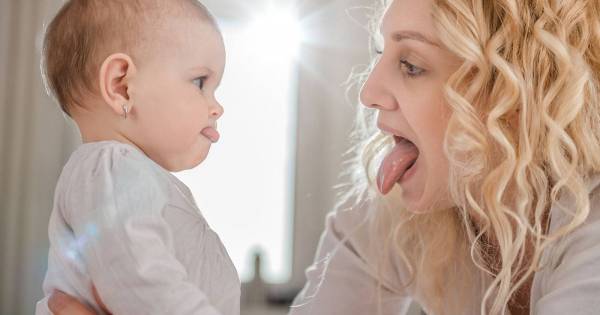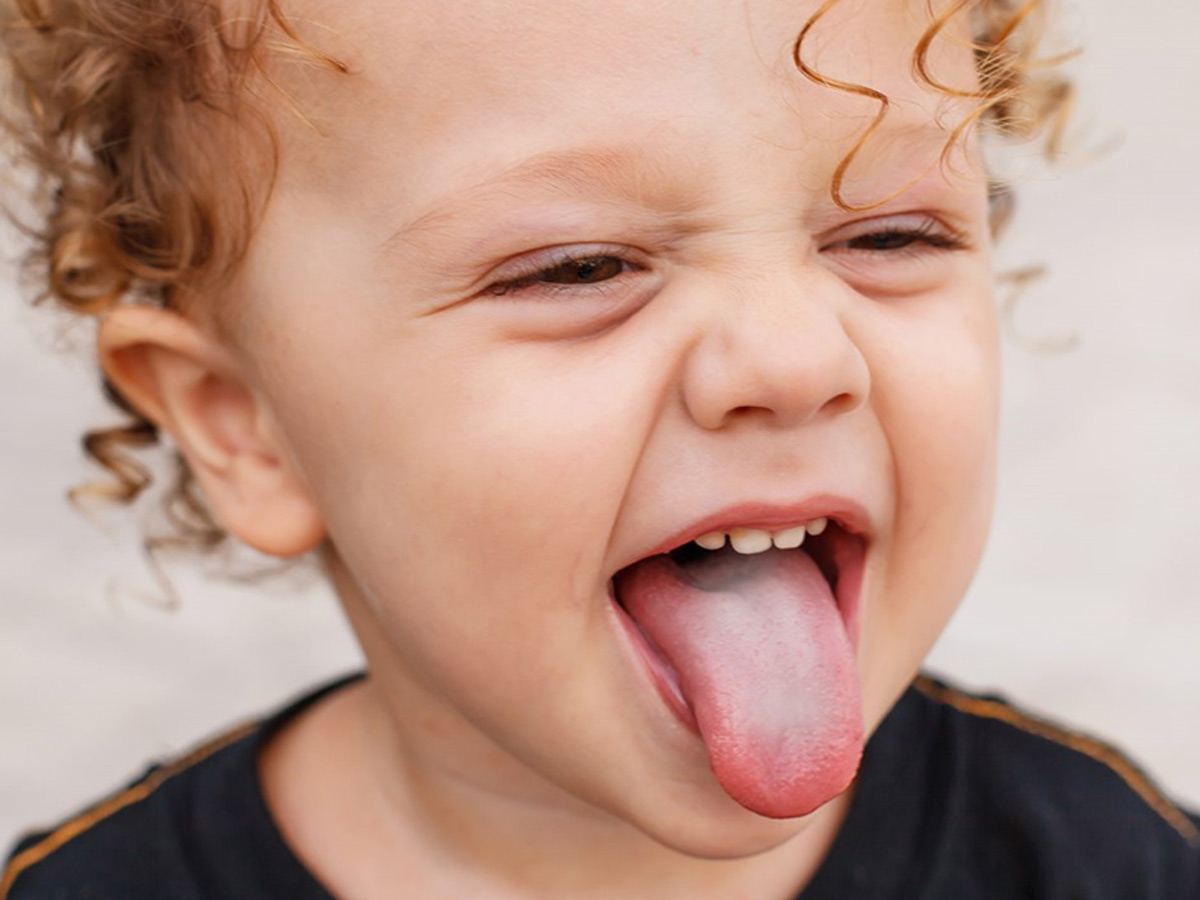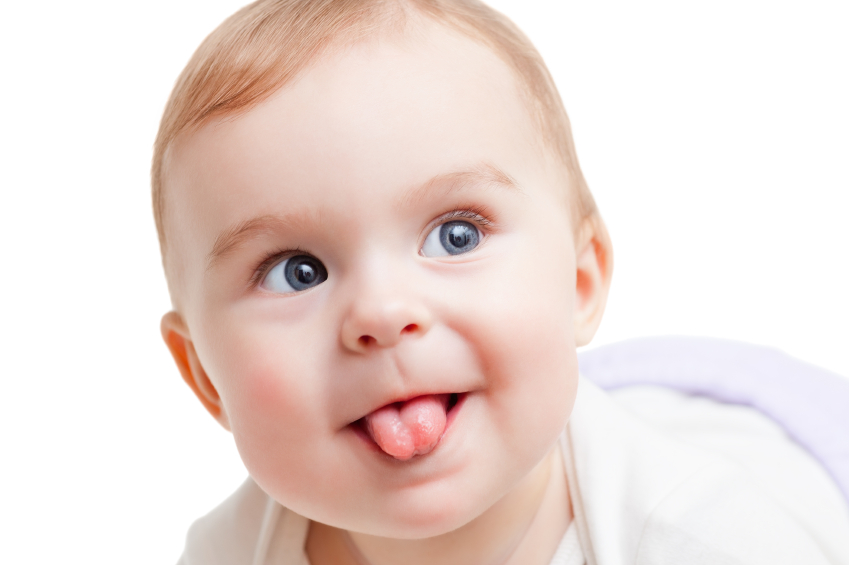Table of Contents
Your newborn may not yet have teeth, but that doesn’t mean you don’t care about their dental hygiene. Cleaning your baby’s tongue may seem unnecessary if he or she isn’t eating solid foods or hasn’t yet developed teeth. Oral hygiene isn’t just for older children and adults; babies’ mouths need to be cleaned, and the sooner you start, the better.
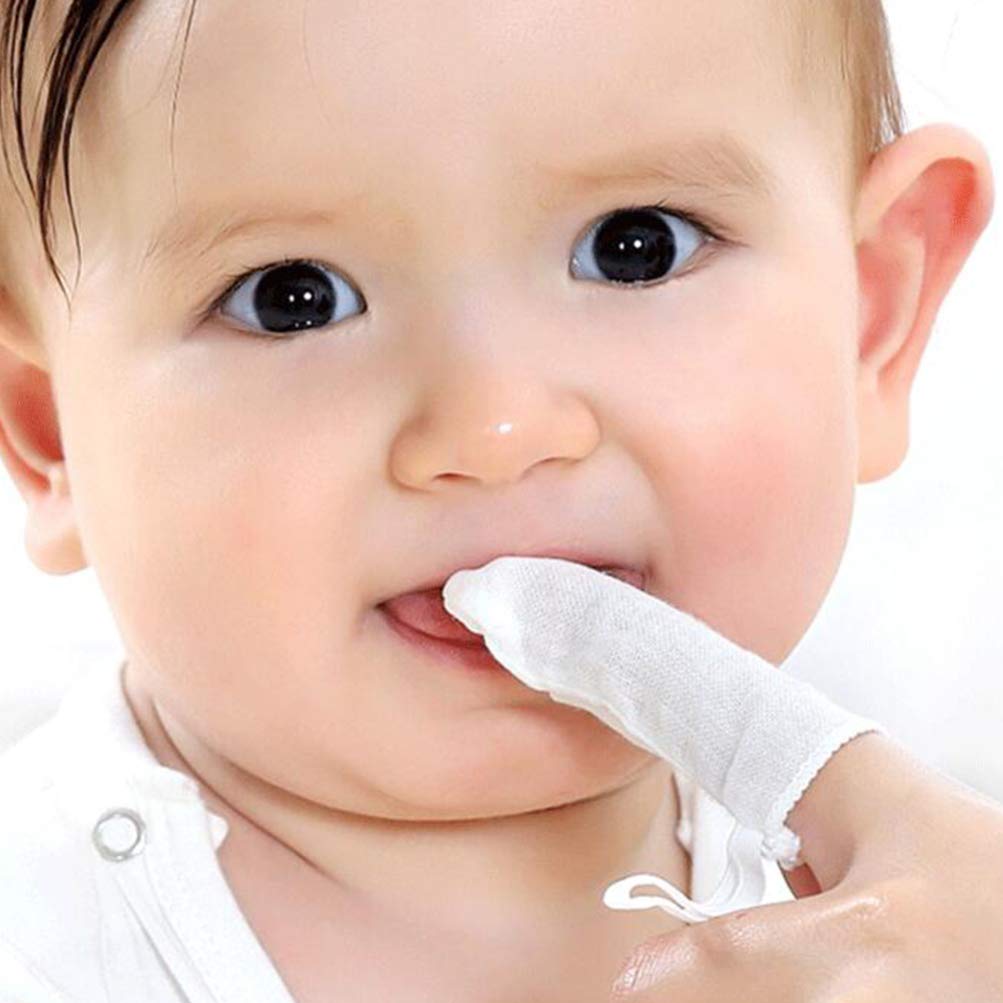
It is critical to maintain healthy dental hygiene in newborns and optimal nutrition. Most new parents wonder how to clean a baby’s tongue because it is difficult! If you have a baby, they may cry while you clean his tongue, making your job more difficult! However, you must clean his tongue and keep his mouth healthy and clean.
Here’s all that you need to know on how to clean a baby’s tongue!
Why should you clean your baby’s tongue?
Why and how to clean a baby’s tongue? Cleaning the tongue is one of the daily oral hygiene‘s simplest yet most important tasks. This simple task, however, can be difficult to complete in newborns. Regular tongue cleaning helps prevent bad breath, bacterial accumulations, and the risk of oral infections and gum disease.
You should clean and massage your baby’s mouth even before teeth appear, as cleaning and massaging the baby’s gums in the early stages can aid in the teething process and ensure proper dental hygiene.
Why is it critical to begin early?
Bacteria exist in a baby’s mouth just as they do in yours.
However, babies have less saliva than adults, making it more difficult for their tiny mouths to wash away milk residue. This can also cause a white coating on their tongue. The residue is loosened and removed by cleaning their tongue.
How to clean a baby’s tongue? Cleaning your baby’s tongue with a damp cloth also introduces them to oral cleaning early on, so it’s not a surprise when you clean their mouth with a toothbrush later.
How to clean a baby’s tongue – Reasons for cleaning the tongue
Teething begins in infants around the age of four months. Even before that, regular oral hygiene is essential. Bacteria can flourish in your baby’s sugary saliva if you leave breast milk or formula residues in their mouth for days. This can result in fungal infections.
It is common for your baby to have a discolored tongue after nursing. That’s the milk residue on the surface of their tongue. Oral thrush is more likely if you notice creamy white wounds inside your baby’s mouth.
Thrush is a common fungal infection that spreads quickly, so consult your doctor if you suspect your baby has it. It appears to be small lumps of cottage cheese that are difficult to remove. Thrush causes discomfort and burning in babies, making it challenging for them to eat. It can also spread to the nipples of a breastfeeding mother.
Lack of oral hygiene in babies with teeth and toddlers can quickly lead to plaque buildup and tooth decay. When your infant or toddler eats a sugary snack, bacteria in the plaque produce acids. These acids erode the protective outer layer of the teeth known as dental enamel, resulting in cavities.
How to clean a baby’s tongue – Steps explained
Cleansing a baby’s tongue and gums is a straightforward procedure that requires few supplies. Warm water and a washcloth or piece of gauze are all you’ll need.
Whether your baby has teeth or not, you must clean his mouth and tongue and practice proper oral hygiene. Follow the steps beneath to know how to clean a baby’s tongue.
- Step One: The first step in cleaning your baby’s tongue is thoroughly cleaning your hands. Before beginning the procedure, make sure your hands are clean. Use a gauze or finger cloth wrapped around your fingers to clean your baby’s tongue. Tongue cleaners are also available in medical supply stores.
- Step Two: If you take gauze, wet it with warm water and wrap it around your finger. Then, place your baby comfortably by cradling them in one arm while cleaning the mouth with the other.
- Step Three: Gently open your baby’s mouth and clean the tongue with your finger.
- Step Four: After inserting your finger, gently scrape the tongue in a circular motion.
- Step Five: After cleaning the tongue, finish the procedure by gently massaging the baby’s teeth (if they have teeth) and gums.
You can also use gum cleaners to remove the buildups. If the cleaners do not remove the buildups, consult your doctor for further instructions. Avoid using fluoride paste or fluoride items because the baby can ingest the fluoride in them.
This cleaning process should be accomplished at least once daily, preferably after feeding.
To clean a baby’s tongue and cavities, doctors recommend using soft brushes designed specifically for babies. If you want to use one for your baby, you should consult a doctor and choose the one recommended by your baby’s doctor.
Also Read: 8 Causes Of Toddler Sleep Regression
How to clean a baby’s tongue? Is Glycerin or toothpaste necessary?
Glycerin is a colorless, sweet-tasting liquid that contributes to the creamy texture of toothpaste. Some skin and hair care products contain it as well.
Glycerin is non-toxic and considered safe once your baby is around 6 months old and using a small amount of toothpaste.
However, neither toothpaste nor glycerin is required to clean the mouth of a newborn or young infant under 6 months. While glycerin is unlikely to be an issue, using toothpaste with such a small child may result in the baby swallowing too much fluoride.
How to clean a baby’s tongue – After 6 months, cleaning a baby’s tongue
You can use a soft, kid-friendly toothbrush and toothpaste on your baby once they are at least 6 months old and have their first tooth. Use this to clean any newly arrived teeth.
You can also gently scrub your baby’s tongue and gums with the toothbrush, or you can use a finger brush, gauze, or washcloth until they’re a little older.
When giving toothpaste to a baby at least 6 months old, only a small amount – about the size of a rice grain – is required. (And just assume they’ll swallow it.) You can increase the amount to pea-size once your child is at least 3 years old.
When your baby has thrush, clean their tongue
It’s important to remember that a white coating on your baby’s tongue isn’t always the result of milk. Thrush is a condition that can cause this.
Milk residue and thrush have a similar appearance. The difference is that milk residue can be removed. Thrush cannot be removed.
Oral thrush is a fungal infection that manifests itself in the mouth. Oral candidiasis causes it, and it leaves white spots on the tongue, gums, inside of the cheeks, and roof of the mouth.
Thrush must be treated with antifungal medication to prevent the infection from spreading. Consult your baby’s pediatrician if the white coating does not come off.
How to clean a baby’s tongue: Baby mouth care tips
Just because your baby has no (or many) teeth doesn’t mean oral care isn’t important. Your baby may have a meal plan that you control, but that doesn’t stop them from touching and eating everything. As a result, it’s critical to keep that small space clean. We’ve compiled a list of infant oral healthcare tips to help you keep your baby’s gummy gums and teeth clean.
- Wash your baby’s gums with a soft wet washcloth after each meal. Massage their gums gently until most of the baby food or milk residue has been removed.
- When your baby goes to bed, avoid leaving a bottle or pacifier in their mouth. Remove it if they are not actively drinking or sucking.
- Selecting the right foods is an important aspect of dental health. Sticky and sugary foods can cause plaque buildup, and starchy foods like potato chips are detrimental to oral health. A well-balanced diet is an outstanding way to improve your baby’s dental and gum health.
- When protecting your baby’s dental health, water and breast milk are a dynamic duo. Unlike sugary fruit drinks, these liquids do not stick to your child’s teeth.
- Give your child real soft and manageable fruits if you want to introduce them to sweets without the harmful effects of concentrated sugar. Alternatively, you can create your natural fruity blends. Your baby will receive the vitamins and oral care he or she requires.
When should you visit the dentist regarding how to clean a baby’s tongue?
Regular checkups with a pediatric dentist and brushing and tongue cleaning are essential for babies and toddlers.
As a general rule, your child should have their first dental visit within 6 months of acquiring their first tooth or by the age of one year, whichever comes first. The dentist will examine their teeth, jaw, and gums to determine their overall health. They will also look for oral motor development issues and tooth decay.
How to clean a baby’s tongue – Things to Remember
Here are some things you will need to do to ensure proper oral hygiene for your baby.
- You must take your baby to the dentist as soon as his first tooth appears. Regular dental visits are advised as soon as the baby’s first tooth appears (generally between 3 and 9 months of age).
- Get your baby’s teeth and fluoride levels checked, as directed by the doctor.
- Speak with your dentist if you have worries about your child’s dental health. Discuss any concerns about nursing or bottle-feeding your baby with your doctor.
How to clean a baby’s tongue: Tips for cleaning
You know how to clean your baby’s tongue step by step by now, but we have some additional tips that will answer any questions you may have about your baby’s oral hygiene. The suggestions below are more like preventive measures, so don’t disregard them!
- The best method to clean the baby’s tongue is with water. Clean the tongue with soft gauze or cotton cloth dipped in warm water. Nevertheless, ensure the water is not too hot for your baby, which could cause harm.
- While cleaning his tongue, engage your child in any interesting activity.
- If you see white particles glued to your baby’s tongue, clean it with a tiny drop of toothpaste, but make sure to thoroughly rinse it off, or your baby may swallow the toothpaste.
- While cleaning the tongue, thoroughly clean his gums and the insides of his cheeks.
- Some babies become irritable and refuse to clean their teeth. If your child becomes irritable while you clean his tongue, wait until he is in a good mood before continuing.
- Last but not least, take your baby to the dentist regularly.
Takeaway
Adequate oral hygiene begins at a young age. Although your newborn will not remember having their tongue and gums cleaned, this routine contributes to their oral health and helps them maintain good habits as they grow older.
Frequently asked questions on how to clean a baby’s tongue
- Why is it necessary to clean a baby’s tongue?
Even though newborns lack teeth, it is critical to clean their mouths as soon as possible. Babies’ mouths, like adults’, are full of good and bad bacteria. However, while we have plenty of salivae to help keep undesirable bacteria at bay (along with other oral hygiene tools), babies do not. This makes it difficult to wash away the milky residue that accumulates in their mouths and on their tongues (that strange white coating) after eating.
- Why is my baby always sticking their tongue out?
It’s important to understand the inside of your baby’s mouth so that it won’t be difficult if they practice sticking their tongues out. Unfortunately, this is not a sign that your baby is a prankster but a common baby reflex known as the tongue-thrust reflex. This odd habit not only helps them breast/bottle feed and feels good for some. Tiny humans are peculiar, and they may do this because they are hungry, full, have gas, have poor muscle control, or breathe through their mouths.
- When should I start brushing the child’s teeth?
Brushing your baby’s teeth can begin as soon as his first tooth appears. To clean his first teeth and tongue, use a clean, damp cloth, a gauze pad, or a finger brush. Brush his teeth gently in the morning and before bedtime once his teeth begin to erupt.
- What exactly is Baby Tongue-tie?
While we’re talking about your baby’s tongue, have you heard of tongue-tie? This is not the same as tongue twisters but rather a medical condition. This occurs when a short, thick band of tissue exists between the floor of your baby’s mouth and the tip of their tongue, interfering with speaking and eating. It is usually not a major issue and can be repaired with minor surgery.
- What to do if my child has thrush?
You may need to know how to clean a baby’s tongue when they have thrush, an oral fungal infection, at some point. Unlike milk residue, which usually wipes right off a baby’s tongue, the white film caused by thrush remains on the tongue. Finally, an antifungal treatment prescribed by your pediatrician is required. So, if you notice your baby’s tongue is always white, it’s time to see a doctor. They’ll help you get the medication your child requires.

